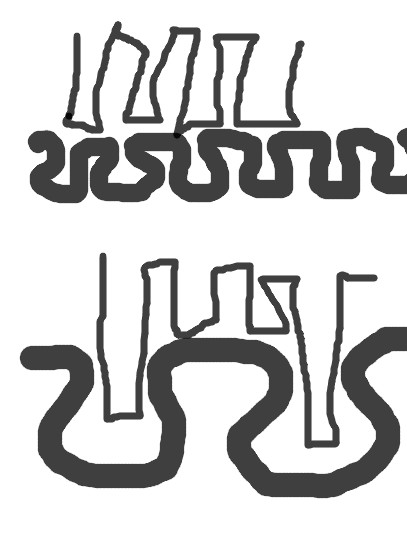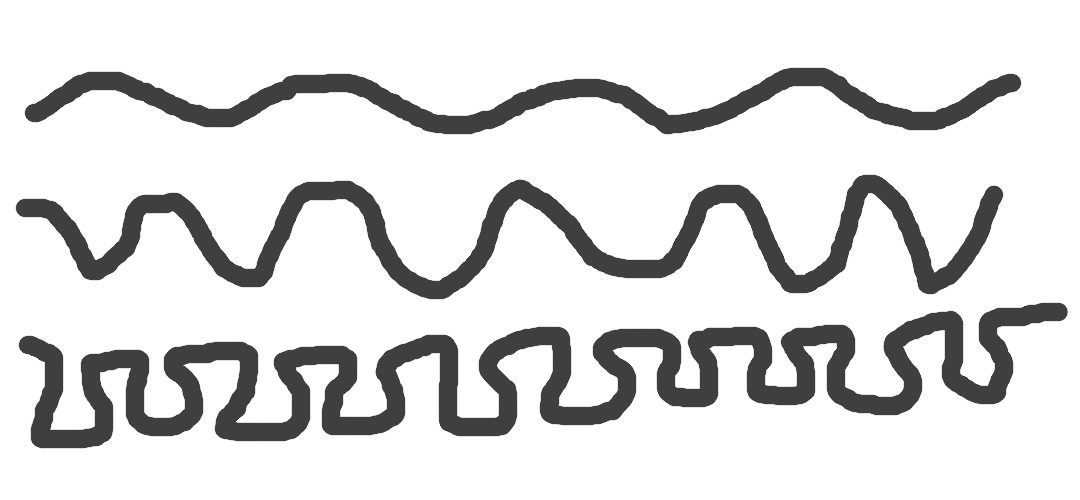Good things to think about...
I read the linked post, but I am not sure I understand why that would account for the possibility that a pot might have pores in which water goes easily in and out.
I guess at this point I have a few questions I am wondering about (these are things for all of us to try to figure out together). The first one is whether it's easier to absorb water from larger pores than from smaller pores when patting dry with a cloth. The fibers of the cloth might enter the larger pores but not the smaller pores. Like this (excuse the poor drawing):

- pattingdry.jpg (31.4 KiB) Viewed 7087 times
This might account for the surprising results that some pots that we expected to be porous (like the Tachi Masaki) were associated with fairly low weight gain.
When people talk about how "porous" a teapot is in the context of Yixing , I tend to interpret this to include all kinds of clay structure properties that affect the tea, and to not include properties that do not affect the tea (i.e. a pot that has very very tiny pores that do not affect the tea would not be "porous" for tea-making purposes). The idea that the effect of Yixing depends on "porosity" (in this loose sense) is in contrast to accounts for which the effect of Yixing teapots results from chemicals in the teapot that leach into the tea.
If we want to understand more precisely what kinds of clay structure properties affect tea, I suspect that we need to ask some hard questions, for example - "what is a pore?" To take a few cases, which ones of these are pores?

- pores.jpg (52.19 KiB) Viewed 7087 times
It feels like we have to draw an arbitrary line. We don't want to get stuck with an issue of terminology. Perhaps for the time being it is useful to think that there might be some properties of clay structure that affect the tea. I am not going to call these properties "pores", because I am not sure how to define a pore precisely enough. What would be interesting to know, then, is what these properties have to be like (i.e. shape and size of cavities/texture irregularities) in order to affect the tea. Then, it would be interesting to know what these properties have to be like (i.e. shape and size of cavities/texture irregularities) in order to trap water. And finally, it would be interesting to know whether and to what extent cavities/texture irregularities that affect the tea also trap water, and vice versa. It is plausible that there will be some properties of clay structure that will affect tea, and some others that will not. For example, we might find some pots that have very very tiny cavities/texture irregularities, and those are too small to affect the tea. Maybe they will still be large enough to trap water. We might also find pots with cavities/texture irregularities that are too large to trap water (i.e. if water goes in but also comes out easily), but that do affect the tea. I suspect that understanding this will require some microscopy.
It is not immediately obvious whether in general we should reserve the name "pores" for the cavities/texture irregularities that trap water, or whether we should reserve it for the cavities/texture irregularities that affect the tea. Finding that a pot that does not trap much water still affects the tea might be evidence that something other than clay structure affects the tea, but it might alternatively be evidence that there are properties of clay structure that affect the tea but do not trap water.
Finally, it is also possible that the effect on tea does not depend on clay structure/cavities/texture, or that it depends jointly on clay structure and something else. So far, however, I have not seen very compelling hypotheses for what that something else would be...
